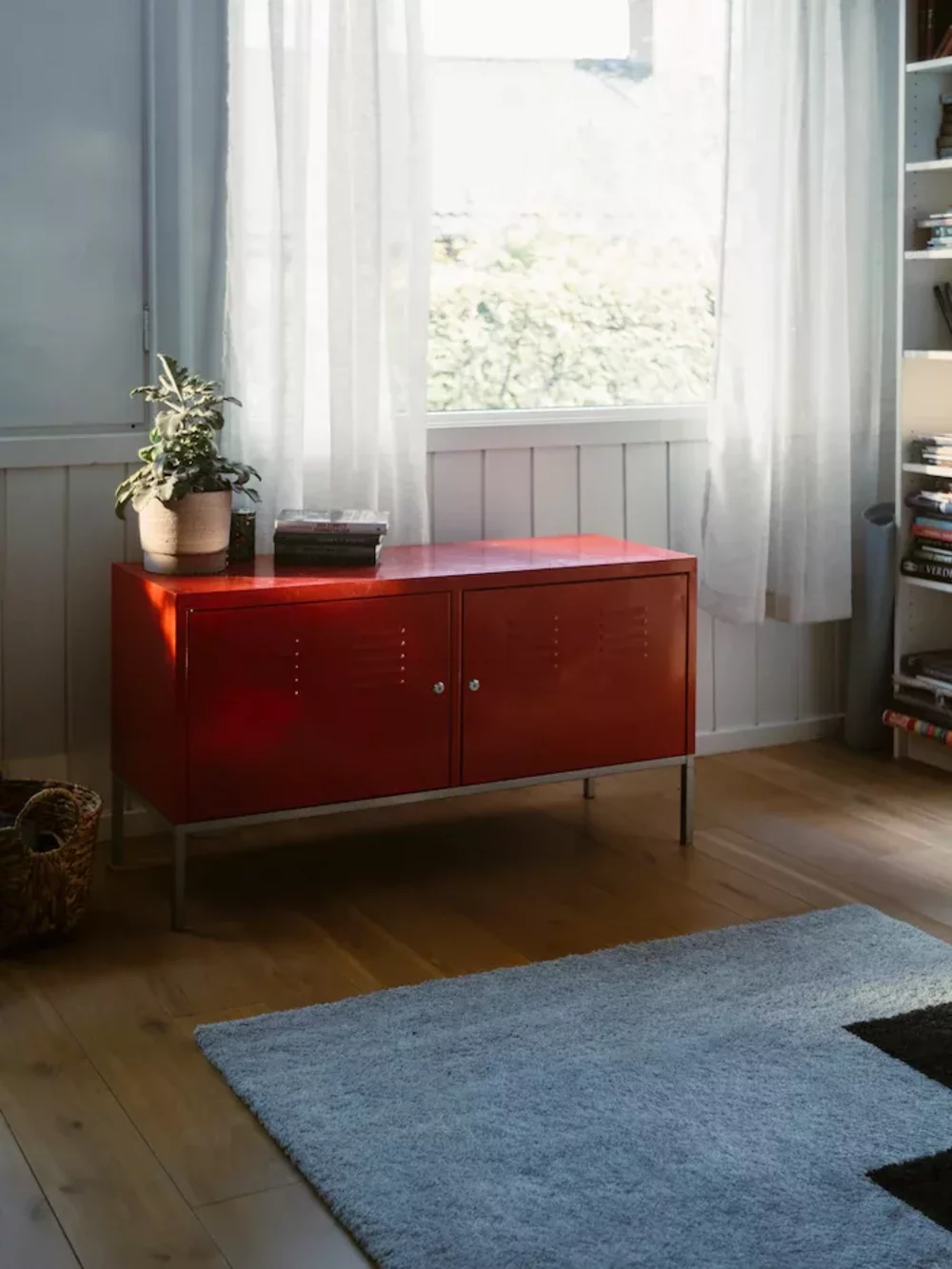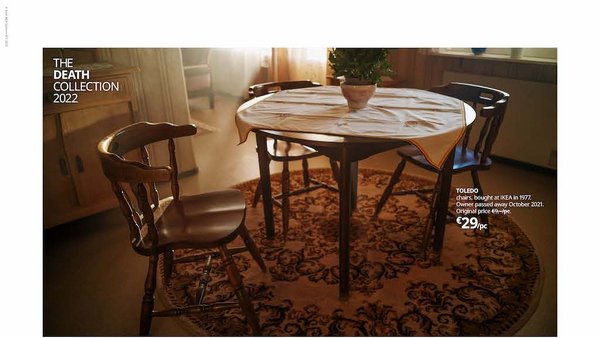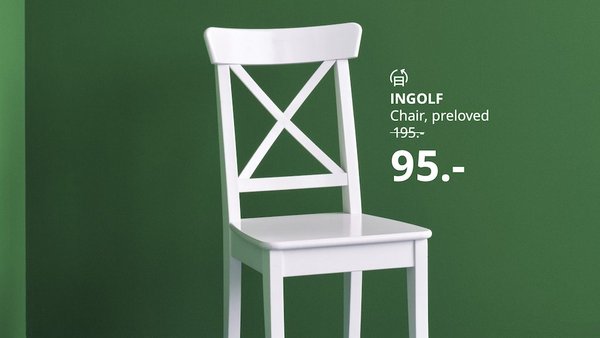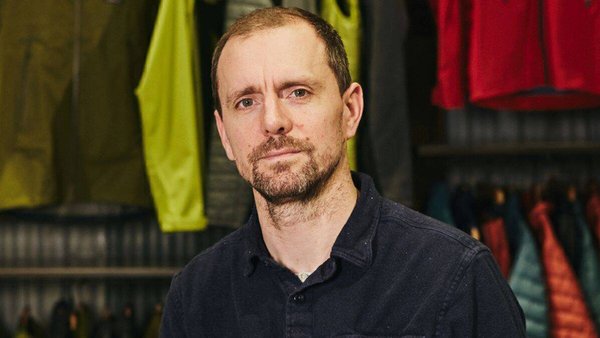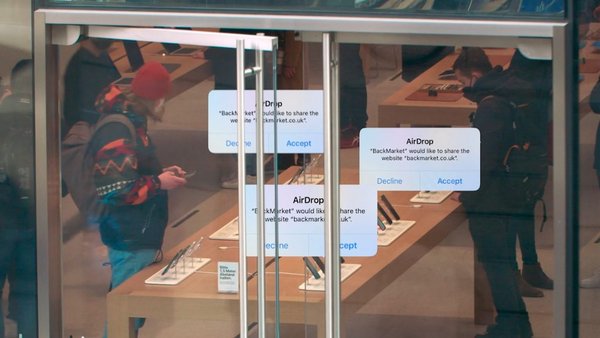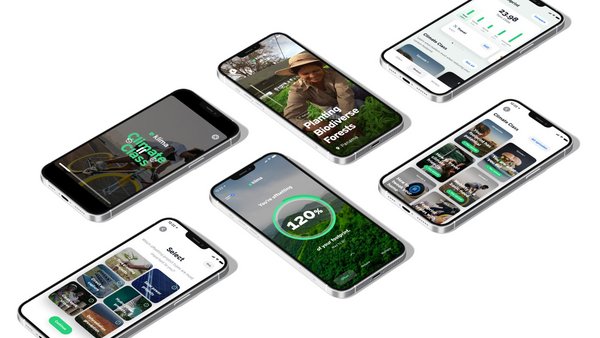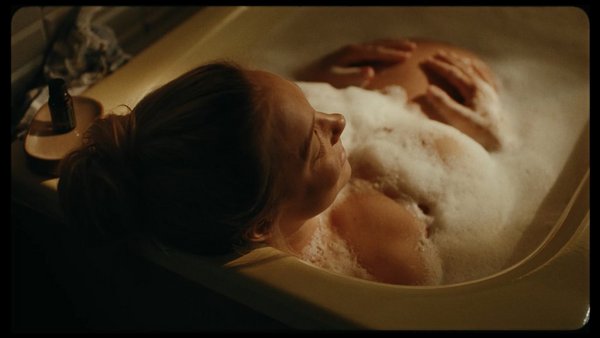
Last month we covered the launch of the Ikea Trash Collection, an ad campaign featuring pieces of Ikea furniture found in rubbish piles in Norway, created by Oslo-based creative agency Try.
Each year in Norway, 3 million pieces of furniture are thrown away. This latest campaign, which features a series of Ikea items found on street corners and in junkyards across the country, highlights the retailer’s role in the problem and raises awareness of its in-store furniture repair services.
The TV and outdoor ads show the name of each discarded Ikea product and says where it was found, what was done to refurbish it, and its secondhand price compared with the original.
The items are also highlighted on the campaign website, where visitors can find out how to order spare parts, learn more about Ikea’s buy-back scheme and get price quotes for specific pieces of furniture, and read about Ikea’s pledge to achieve zero waste and become 100% circular and climate-positive by 2030.
Update 13/07/2022: This campaign has won a Gold for Print & Publishing at the 2022 Cannes Lions Festival for Creativity.
To find out more about the idea and where it fits into the brand’s global sustainability push, we spoke to Caroline Riis, senior creative at Try, who told us:
The Trash Collection was conceived for a Norwegian audience that appreciates honesty and transparency over glossy advertising
In order to shift perceptions and behaviours, Ikea must acknowledge its role in furniture waste and show that its furniture is durable and worth repairing
Sustainability is a huge driver of consumer preference in Norway, particularly among younger consumers
Brutal honesty and authenticity was key to the creative and a less transparent approach could dilute the campaign’s message

Over the past two years we’ve covered a number of sustainability initiatives from Ikea in different territories – Stuff Monster and the Ikea Scrapsbook in Canada, the Black Friday (Re)sale campaign in Denmark, Fortune Favours the Frugal in the UK and Ireland – where does this campaign fit into this global push?
Caroline Riis: Ikea wants to have this role as a positive change-maker in people’s homes. To do that they have to know each market individually – even though they have this mass-market, international voice and their sustainability goals for 2030 are global, sustainability in Norway is vastly different to, say, in India. Local initiatives show that Ikea really understands each audience and how they live their life.
Caroline Riis, Try
When we got the brief, Ikea wanted to talk about sustainability, but we had to address the elephant in the room: Ikea is seen as a disposable furniture maker. The fact that they’re talking about massive sustainability goals is amazing but in order to get people to listen, they have to believe Ikea. We knew about all the initiatives and measures already being taken by Ikea, but they also mentioned that Ikea does spare parts now.
My partner Eirik [Sørensen, art director at Try] and I were like, wait, what? I don’t think people know you do that. These secondhand stores are rolling out in every store in Norway, so they wanted to [raise awareness] of that. So this campaign was two-step: we wanted to show the measures already being taken towards 2030, and we also wanted to [acknowledge] that people throw away Ikea furniture and they don’t need to do that now.

How does Ikea tackle the tension between existing to sell more stuff/encouraging consumers to buy less stuff? How did it influence the work?
Ikea is very fond of people taking care of what they already have. They want their furniture to last, and even though they sell furniture at a low cost, they want people to hold on to what they have. So through the buy-back scheme and offering spare parts and repairs, even though they want people to buy their furniture, they want them to buy it once and then hold on to it for as long as they can. It’s not about pushing out as much furniture as they possibly can, they want to make sustainability more affordable. And now with a shift to more sustainable materials and plant-based food, the stuff that they’re selling is actually better for the planet.
Caroline Riis, Try
Can you speak to Ikea’s business challenge in Norway versus globally?
I think just that issue of people assuming that Ikea is disposable. Especially for a younger generation, sustainability is massive. The younger generation in Norway is very consumed by climate action, it’s a massive issue and one that might be the difference between people choosing Ikea over another brand, thinking that Ikea furniture won’t last. We know people can have shelves from Ikea for over 40 years, but you just assume they won’t last, so you throw them away. I think taking that issue head-on and showing furniture in the trash shows that Ikea knows it is part of the problem and that people throw its products away. But you can make throwing away furniture the least attractive option. People throw furniture away because it’s cheap, but you don’t actually think of the environmental impact that will have. And the people who think that won’t go to Ikea. So it’s about shifting that perception.

Alongside this aim to challenge quality perceptions, were there any other business objectives tied to the brief?
Ikea can answer that probably better than we can, but in the brief for us, they wanted this behavioural shift for how people use their furniture. Also, they’re the world’s largest furniture retailer and of course, they want it to stay that way. That comes with a certain responsibility and they have to take certain steps to secure the position they have and keep people visiting Ikea and using their furniture. So the main thing in the brief for us was, ‘Make people think twice about throwing furniture away, and show the other stuff that we are doing in addition to selling furniture.’
Do you have a way of measuring the impact of this campaign?
Luckily, Ikea is very good at measuring everything they do, from how much furniture they’ll now get back in stores, to how many visits to the secondhand store, how many free spare parts are given out – and then likeability and other brand metrics. They’ll measure every last result.
Caroline Riis, Try
How did you approach the brief initially?
We were a bit scared, to be honest – we had this glaring insight, staring us in the face. ‘Oh, you want us to talk about sustainability, well there is one issue you should talk about.’ I remember the first presentation we had, walking in and saying, we have this one idea we like. We literally had a picture of heaping piles of garbage and put an Ikea product name and a price in the middle of that stinking trash pile. We knew that if we were doing this, we’d have to do it properly. We’d have to do it real and honest. If we’d used a beautifully placed chair in the middle of a very clean room, it wouldn’t have been the campaign we wanted to make. We had to start grimy in order to say, either you buy this [idea], or you don’t. Luckily – and surprisingly – Ikea jumped on it. They’ve been very supportive the whole way, and that’s pretty brave for a client like Ikea.
The creative itself is quite beautiful – were those images of discarded products staged or real?
The production company, Aparent, were hired to do the shoot, and our brief for them was that this has to be real discarded furniture, you can’t buy new furniture and add a little stain. And Ikea, more than anyone, was like, ‘This has to be real, we can’t do this with a new Billy shelf.’ So they literally drove around – the shoot was meant to be two days but they got so eager they drove around different counties in Norway for nine days – just finding furniture. I can’t say for sure that they didn’t find a chair there and place it here, but that’s the most staging they would have done.
One day, the director called us because they’d found this whole neighbourhood that had done a spring clean and thrown all the furniture out in the yard. There were mountains of garbage on the lawn, ready for the tip, and hundreds of pieces of Ikea furniture. I think four or five of the executions were from furniture found at that gemstone of a place. There were a couple of pieces we found that were out of production, so we had researchers at Ikea looking through old catalogues to find models from 2003 in order for us to restore them. The director took all the pictures and we created a behind the scenes movie showing the crew out in garbage tips and woods and employees at Ikea in the secondhand store, talking about what this means to them.
Caroline Riis, Try

How did you ensure you got the tone right and didn’t just end up reinforcing negative perceptions of Ikea’s furniture as disposable?
It was a long journey. The main thing was transparency. Just showing furniture where it had been discarded. The song choice was also important. We had more than 800 songs downloaded to put on top of the film. You could so easily guilt-trip people and say, look, this is your fault. Or you could not take it seriously enough. So that tonality of saying, we know there’s a problem, but look how easy it is to fix, look how easily you can avoid this problem, without talking down to people – Ikea was very aware of that. We’re not educating people, we’re saying we know how it is, and we’re going to help you change it. We know how we are, and we’re going to help ourselves change. So there were lots of talks about the wording – ‘might’ instead of ‘should’, and so on. We worked with Ikea to make the tone humble but also real.

It is a really fine line for a brand to take responsibility for something without also making itself the scapegoat. Did you have to follow a global brand book or were you given freedom at a local level?
Ikea absolutely has a brand book, but the great thing about this was how each market is allowed to evolve. The global book might come from America or Sweden, and might not know how to speak to an audience in Norway. So while we had certain things in the back of our heads, we did our own thing. A marketing director at Ikea who we worked with had to show it to a global team when we were done, and I think he was a bit nervous to say, ‘Yeah, we might have strayed from a few of the guidelines, but for the greater good.’ Luckily the team saw that although it was out of the ordinary it was getting the point across in the right way.
Caroline Riis, Try
How is this being rolled out?
We launched it on TV first, with just one hero film for the first week. We followed up the week after with these other films that say, ‘Maybe this didn’t need to end up here, maybe all it needed was a spare part – order spare parts at Ikea’ or ‘send it back to us’. And then we rolled out outdoor weeks after that, so it’s been a long push. As the first films went live on TV, we knew there was potential and it was different for Ikea, so we got the production team to translate all the films and we sent them out to our contacts globally. Obviously with the permission of Ikea, but very rogue. We don’t have this whole PR team, we literally just sent off 50 emails and waited to see how it got picked up. Once it was covered in some places, that organically spread.
How have you found the response?
It’s been really interesting – I think a lot of people were surprised that Ikea dared to show their products in this way. But I’m yet to find a negative comment. Norwegians like it real – they don’t like the glossy, polished, American ads. When I worked in New York, the way you talk and showcase things is very different to how we do it in Norway. I think Norwegians really appreciate saying it how it is, and showing that they know themselves and are honest about who they are. I think that’s why Ikea Norway dared to do this, because they know the audience would appreciate it.
Caroline Riis, Try

With that cultural difference in mind, are there plans to roll this out in other territories?
I think we are taking steps to adapt it for other countries over the next few months. I’m almost scared to see if it could be replicated somewhere else, because I know how hard the production here worked to make it authentic. Would another version be as sincere? That’s me being really overprotective of the idea, but I don’t think Ikea would allow it to not be translated in the way it deserves. Because this insight isn’t exclusive to Norway. The UK, for example, would resonate with the insight of throwing Ikea furniture away. It will be interesting to see.
What was your biggest takeaway from this campaign?
Don’t be scared to scare the client. Don’t be scared to do that idea that you’re afraid might offend them. Don’t be afraid to push the client. In our case, we didn’t have to push, we just didn’t know we didn’t have to push. When we went in with the Ikea Trash Collection, they could have said, what are you talking about? But they’ve been amazing through all of this. Don’t underestimate the client. Go for the idea that you’re scared to present.
